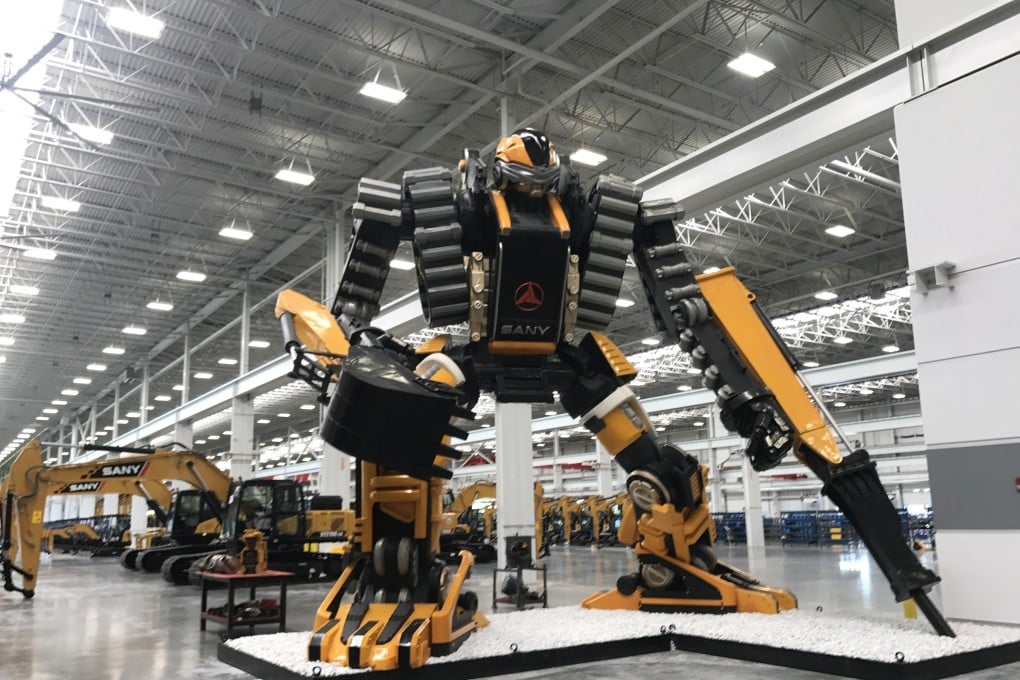Exclusive | Chinese excavator giant Sany digs in for long haul, sidesteps Trump tariffs with US-based production
- Company has started putting together its SY215 and SY265 models from broken-down parts in Peachtree City, Georgia
- Sany aims to add another 300 jobs in US to the current 100, and grow its dealer network to 100 by mid 2020 from the current 36

Sany Heavy Industry, China’s biggest heavy machines manufacturer by sales, last week started assembling from scratch hydraulic excavators at its US headquarters in suburban Atlanta, Georgia.
The company is putting together its SY215 and SY265 models from broken-down parts sourced from China, as well as the United States, Japan and South Korea, in what is known as completely knocked-down production. Until October 2018, it was importing only complete machines from China.
“They are in the medium-size excavator class, and they compete head to head with the best of the competition,” Doug Friesen, chief executive of Sany America, the Shanghai-listed company’s US subsidiary, said in a phone interview with the South China Morning Post from his office in Peachtree City, Georgia.
Sany is taking a different approach as it pushes into the competitive US market to take on global leaders such as Caterpillar and John Deere in their own backyard. While many Chinese manufacturers are struggling to export to America because of tariffs imposed by the Trump administration, Sany has moved production to the US.
The company will add two more models to its completely knocked-down production line next year, and build another for smaller excavators, according to Friesen, as it shifts away from imports.
It aims to add another 300 jobs locally to the current 100, and grow its dealer network to 100 by mid-2020 from the current 36. Depending on market share, the company will consider building two more manufacturing facilities and a research and development centre on its current 228-acre site.